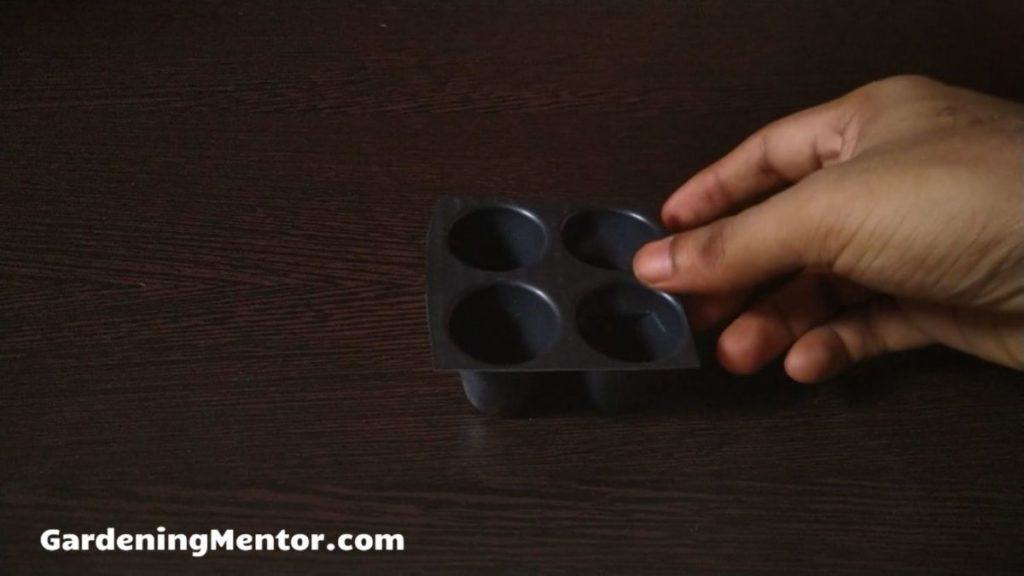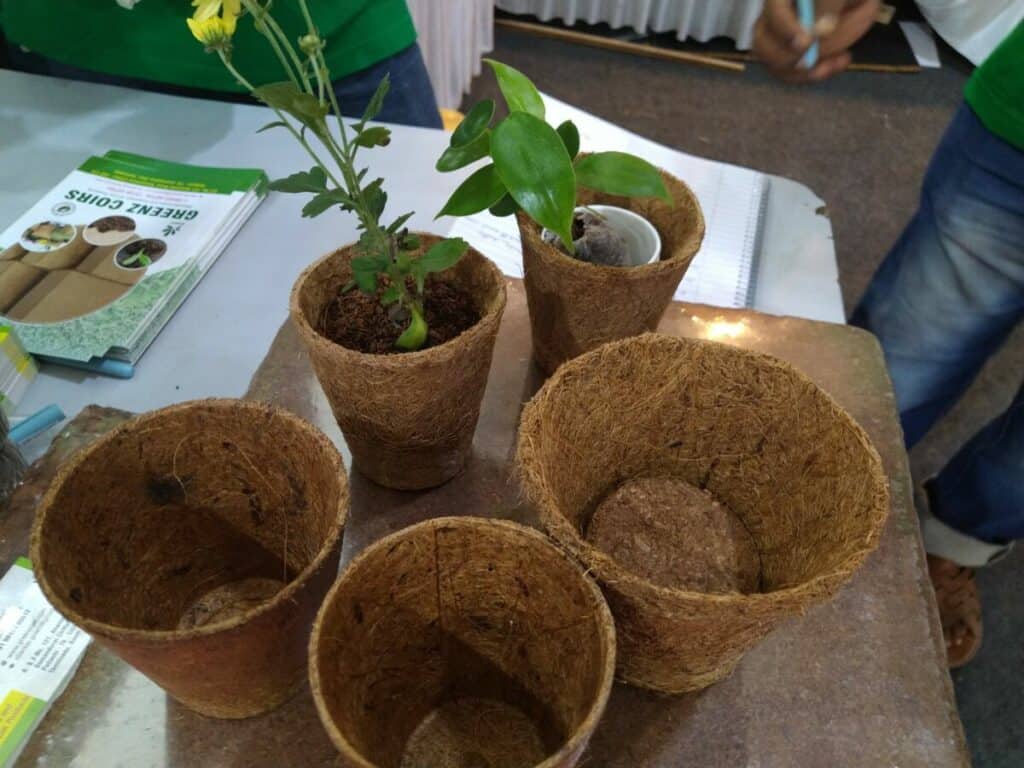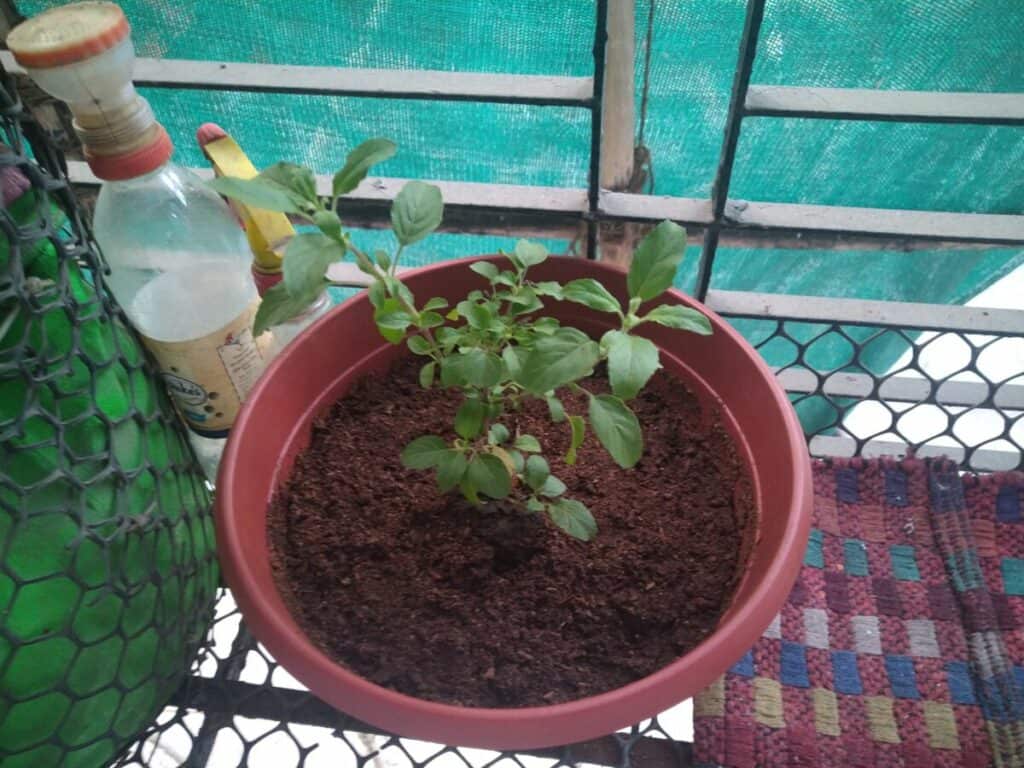I am forced to grow plants in pots because of the limited space in my apartment balcony. But I did wonder if plants grow smaller because of growing them in such pots.
Plants won’t grow smaller in pots than ground if the plants get the required space, nutrients, moisture, and sunlight. But if any of these requirements is lacking in the pots, it will stunt the plant’s growth.
I contacted many expert gardeners who helped me understand the concerns when growing plants in pots rather than the ground. They gave their experiences and suggestions on what to do to get the best out of such plants.
Lack of growing space can stunt plant growth
The main concern when growing a plant in a pot is less growing space than required. If the plant roots don’t get the required space, it will stunt the growth.
The roots of such plants need to spread into the soil in search of nutrients and moisture. This is easier to do in the ground than in the restricted size of a pot.
Plant size is largely a function of genetics, nutrition, and irrigation. Plants that are genetically programmed to have larger root system can certainly be stunted by a too-small container, but proper irrigation, feeding, and sun exposure will help plants reach full size. – Kate Russell, The Daily Garden
The best thing to do is plant in a pot that is at least 1-2 sizes larger than the plant size. This gives the plant sufficient growing space but not too much.
As the plant keeps growing, you can transplant it to a larger pot if you see that it’s reaching the limits of its existing pot.
Fewer nutrients may reach the roots of the plant
We know that the plants growing in the ground can spread their roots searching for nutrients, but the potted plants cannot.
This means the potted plants are dependent on you to provide them with the required nutrients every few weeks. The lack of such nutrients will stunt the growth of the plant in the pot.
I recommend adding compost to the potting soil every month during the growing season. I also suggest adding a slow-release fertilizer every 2-3 weeks to the potting soil.
Apply 10-10-10 (NPK) fertilizer every two weeks, according to the manufacturer’s directions. (gardenerspath.com)
You could also add a liquid fertilizer instead that you dilute with water and spray it on the foliage or the potting soil.
Make sure to follow the manufacturer’s instructions when using such fertilizer. Use the right amount and at the right time as suggested in those instructions.
Lack of sunlight can occur in the pot

If you grow plants in a pot you need to make sure they get the required sunlight. This is easier to do when the plants are outdoors and in the ground.
The lack of sunlight can seriously impact the growth of the potted plant depending on the type of plant it is. If it’s a plant that needs full sun such as most vegetable plants including tomatoes, cucumbers, and peppers, the lack of sunlight will stunt the growth.
The lack of sunlight can create even more problems if the potted plants are kept indoors. It’s best that you either pick plants that can grow in low-light areas. Or it would help if you used artificial lighting to give the plants the required light they need.
Lack of moisture can affect plant growth
If the plant grows in the ground, the roots can reach deep and wide into the soil and get the required moisture. But that can’t happen when growing the plant in a pot.
The limited area in the pot means the potting soil can only hold some moisture. You need to keep watering the soil so the plant can get the moisture it needs.
I recommend checking the potting soil every morning whether it needs watering or not. Of course, this also depends on the type of plant and how much water it needs.
Depending on the composition of the container mix, the amount of water needed to fully wet the media in a container is normally between 45% and 60% of the container volume. (content.ces.ncsu.edu)
For the average plant, you need the potting soil to hold moisture 1-2 inches inside. So stick your finger 1-2 inches in the soil and check if the soil sticks to it. If the finger comes out dry, that is the time you need to give the potting soil a good watering.
Too much moisture can also be a problem
If the plant grows in the ground and there is good drainage, the excess water can drain out without issues. When growing the plant in a pot, you need to have sufficient drainage holes.
If this is lacking, the water will accumulate at the bottom of the potting soil and cause fungal problems in the plant such as root rot.
The fungal issues will damage the roots and they won’t supply the required nutrients to the plant causing issues with the growth.
I recommend that you have plenty of drainage holes at the bottom of the pot before you grow plants in it. Only water the plant when the potting soil has dried out.
Stick your finger 1-2 inches into the potting soil to check this. If the tip of your finger comes out dry, give a good watering to the plant.
Lack of aeration
If you grow plants in a pot, they may be too close to each other. This will cause a lack of airflow among the foliage. These conditions can create a humid environment that may invite fungal issues in the potted plants.
Such fungal problems will cause damage to the foliage and roots of the plant causing issues with the growth.
This lack of aeration won’t be a problem when growing plants in the ground as you can have plenty of growing space between the plants.
I recommend finding out how much spacing is needed between the plants before growing them in the pot. Don’t try to crowd the pot with more plants than recommended.
Do edible plants have less yield in pots than the ground?
Edible plants will have less yield in pots than the ground if you don’t provide them with the required growing space, nutrients, sunlight, aeration, and moisture. But if you do provide all the necessary requirements, the yield will be the same.
So here are my suggestions you can consider when growing edible plants in pots.
Give the plants the required growing space
You need to find out the required size of the pot before you start growing a plant in it. It’s best to pick a pot that is 1-2 sizes larger than the plant. As the plant grows, you may need to transplant it to a larger pot if more space is needed.
Make sure you understand the spacing required between the edible plants as they grow. Check the seed packets or read online information about how much distance should be kept so the plants can grow without crowding each other.
Give the plants sufficient nutrients
If you want to get a good yield from the edible plants in pots, you need to give them a regular supply of nutrients.
The best way to do this is to use a combination of compost and organic fertilizer. You can add a little compost to the potting soil every month.
Assuming that you give the plants the same amount of water and fertiliser most plants will grow similar to each other whether in ground or a pot if the container is an appropriate size for the plant. – Mark Valencia, Self Sufficient Me
You can add a slow-release fertilizer every 2-3 weeks depending on the plant needs. If it’s liquid fertilizer you can spray it every 2 weeks on the foliage or potting soil.
Follow the manufacturer’s instructions on how much fertilizer you should add to the potting soil and how often.
Make sure they get the required sunlight
Most edible plants need a lot of sunlight. Typically, you need to provide 6-8 hours of direct sunlight for them to grow well.
You need to place the potted plants in a location that gets them this required sunlight. There should be no obstructions like walls, fences, large plants, or trees blocking it.
Make sure you’re watering them well
Water is another key requirement if you want your potted edible plants to give you a good yield. This is especially critical for fruit plants like tomatoes, cucumbers, eggplants, squash, and peppers.
I recommend checking on the potted plant every day to see if the potting soil needs moisture. Stick your finger 1-2 inches into the soil and check if the soil sticks.
If the finger comes out dry, it’s time to give the potting soil a thorough watering till the excess water drains out from the drainage holes at the bottom.
Can you grow plants in pots and move them to the ground?
You can grow plants in pots and move them to the ground as long as they will not be damaged. Some plants prefer to be directly seeded into the pot and don’t like to be transplanted. You need to avoid moving such plants from the pots to the ground. Instead, plant them directly into the ground.
Plants such as spinach, beets, and carrots are plants that you don’t want to move once you have planted them.
Whether you can move the plant from the pot to the ground depends on how big the plant has grown and its health. It’s common to grow seedlings indoors in seed-starting trays and then transplant them in the ground.

If the plant has grown very large, it becomes a bit more difficult to move it to the ground because there’s a higher risk of damaging its roots. It may also take the plant more time and effort to adjust the move to the outdoor soil.
If your basil is small and producing plenty of leaves, transplanting it into the ground will work fine and will allow it to expand and continue to grow. If, however, your basil has gotten tall and skinny with mostly branches and not as many leaves, it may not recover when planted in the ground. – Carrie Williams, Homestead How-To
A solution to help you move the plants from pots to the ground with ease is to grow the plants in peat pots or newspaper pots.

So when you want to move them into the ground, you dig a hole and place the entire pot inside it. The peat or newspaper will decompose in a few days and your plant will be growing in the ground. This method would also work well for plants that don’t like their roots disturbed during the transplant.

Are big pots bad for small plants?
Big pots are not bad for small plants and there’s no harm in using them. The problem is you’ll waste a lot of potting soil and nutrients if you use them. You do need to be careful when watering. Since the plant’s roots are small they won’t absorb all of the moisture which can risk overwatering.
I recommend using a pot that is 1-2 sizes larger than the plant. There’s no need to use a bigger pot unless you are reusing some old ones.
You may even find it better to grow several plants in the same pot if it’s big enough to hold all of them. It will help you make better use of the potting soil and nutrients.

Fact Checked, Written, and Published by Kevin Rodrigues
Kevin is the founder of Gardening Mentor, a website that aims to teach people to grow their own food in a limited space. As a self-taught gardener, Kevin has spent several years growing plants and creating gardening content on the website. He is certified in Home Horticulture and Organic Gardening from Oregon State University. He has a Post Graduate Diploma in Horticulture and Landscape Gardening from Mumbai University.
Read more
